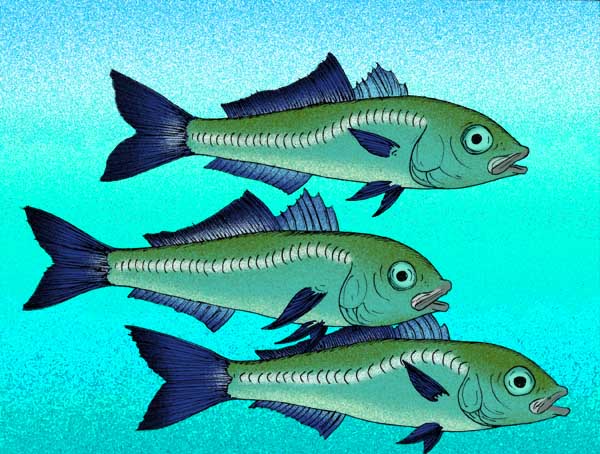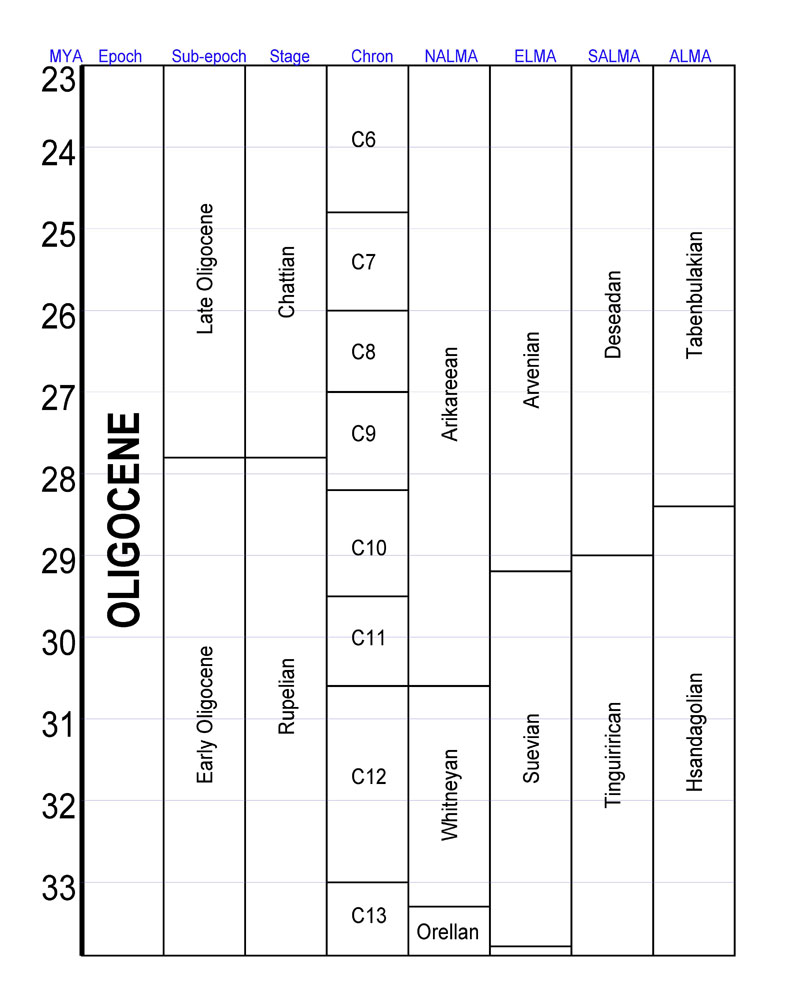|
Turkmenidae
Turkmenidae is an extinct family of lamprids from the Paleogene of the west-central Asia, in what was formerly the Peri-Tethys Ocean. They were small, disk-shaped fish that bore a strong resemblance to their closest living relatives, the opahs. '' Turkmene'' and '' Danatinia'' are found in the Thanetian epoch (of the Paleocene) sections of the Danata Formation of Turkmenistan. '' Analectis'' is found in Late Oligocene strata in North Caucasus The North Caucasus, or Ciscaucasia, is a subregion in Eastern Europe governed by Russia. It constitutes the northern part of the wider Caucasus region, which separates Europe and Asia. The North Caucasus is bordered by the Sea of Azov and the B ..., Russia. After the extinction of '' Analectis'', Turkmenidae disappears from the fossil record. References Further reading * K. A. Monsch and A. F. Bannikov. 2011. New taxonomic synopses and revision of the scombroid fishes (Scombroidei, Perciformes), including billfishes, from th ... [...More Info...] [...Related Items...] OR: [Wikipedia] [Google] [Baidu] |
Lampriformes
Lampriformes is an order (biology), order of Actinopterygii, ray-finned fish. Members are collectively called lamprids (which is more properly used for the Opah, Lampridae) or lampriforms, and unite such open-ocean and partially Deep sea, deep-sea Teleostei as the crestfishes, oarfish, opahs, and ribbonfishes. A synonym (biology), synonym for this order is Allotriognathi, while an often-seen, but apparently incorrect, spelling variant is Lampridiformes. They contain seven extant family (biology), families which are generally small but highly distinct, and a mere 12 lampriform genera with some 20 species altogether are recognized. They are the only extant members of the superorder Lamprimorpha, which was formerly diverse throughout much of the Late Cretaceous. The Binomial nomenclature, scientific name literally means "shaped (like the) bright (one)", as "lampr-", meaning bright, comes from ''lampris'', the generic name for the opah. In contrast, most other living lampriforms are ... [...More Info...] [...Related Items...] OR: [Wikipedia] [Google] [Baidu] |
Analectis
''Analectis pala'' is an extinct Lampriformes, lamprid of the family (biology), family Turkmenidae, of which it was the last surviving member. Its fossils are found from Early Oligocene strata of the Krasnodar Krai, Russia. ''Analectis'', as with the other members of Turkmenidae, was a close relative of the opahs. An indeterminate lamprid with potential affinities to it is known from the early Eocene of Denmark. References [...More Info...] [...Related Items...] OR: [Wikipedia] [Google] [Baidu] |
Danata Formation
The Danata Formation (or Danatinskaya, Danatinsk, Russian: Danata Svita) is an Ypresian, earliest Eocene to Middle Eocene sedimentary succession located in Turkmenistan. It is mostly famous for its fish-bearing horizons (Ichthyofauna). The formation for example crops out in the Kopet Dag mountain range in the border region of Turkmenistan and Iran. It was deposited in a far northeastern arm of the Tethys Ocean, Tethys Sea. Previously, it was thought that the earliest horizons of this formation dated to the latest Paleocene (Thanetian). However, more recent studies have found the formation's sapropel to originate from a global anoxic event caused by the Paleocene–Eocene Thermal Maximum, Paleocene-Eocene Thermal Maximum, indicating that it formed just after the Paleocene-Eocene boundary, during the earliest Ypresian. Paleoenvironment The Danata Formation is famous for its ichthyofauna. The fish are found in a thick clay horizon in the middle of the succession, that has been dat ... [...More Info...] [...Related Items...] OR: [Wikipedia] [Google] [Baidu] |
Danatinia
''Danatinia'' is an extinct genus of lamprid fish from the Eocene. It contains a single species, ''D. casca'' from Danata Formation Lagerstatten, of the earliest Ypresian of Turkmenistan. It was first named by Daniltshenko in 1968. ''D. casca'' was sympatric with its close relative, '' Turkmene''. In life, it would have resembled a very small opah. External links ''Danatania''at the Paleobiology Database * ''The first fossil ribbonfish (Teleostei, Lampridiformes, Trachipteridae)'' by Giorgio Carnevale, Istituto di Geoscienze e Georisorse, Pisa, Italy Pisa ( ; ) is a city and ''comune'' (municipality) in Tuscany, Central Italy, straddling the Arno just before it empties into the Ligurian Sea. It is the capital city of the Province of Pisa. Although Pisa is known worldwide for the Leaning Tow .... * Turkmenidae Prehistoric ray-finned fish genera Eocene fish of Asia Ypresian genera Fossils of Turkmenistan Fossil taxa described in 1968 {{Lampriformes-stub ... [...More Info...] [...Related Items...] OR: [Wikipedia] [Google] [Baidu] |
Turkmene
''Turkmene finitimus'' is an extinct lamprid from the Danata Formation Lagerstatten, of the Upper Paleocene of Turkmenistan. It lived sympatrically with its close relative, '' Danatinia''. In life, ''T. finitimus'' would have resembled a spadefish with beak-like lips, or a very small opah (its closest living relative) with a bulging forehead. External links ''Turkmene''at the Paleobiology Database * ''The first fossil ribbonfish (Teleostei, Lampridiformes, Trachipteridae)'' by Giorgio Carnevale, Istituto di Geoscienze e Georisorse, Pisa, Italy Pisa ( ; ) is a city and ''comune'' (municipality) in Tuscany, Central Italy, straddling the Arno just before it empties into the Ligurian Sea. It is the capital city of the Province of Pisa. Although Pisa is known worldwide for the Leaning Tow .... Turkmenidae Paleocene genus extinctions Prehistoric ray-finned fish genera {{Lampriformes-stub ... [...More Info...] [...Related Items...] OR: [Wikipedia] [Google] [Baidu] |
Thanetian
The Thanetian is, in the International Commission on Stratigraphy, ICS Geologic timescale, the latest age (geology), age or uppermost stage (stratigraphy), stratigraphic stage of the Paleocene epoch (geology), Epoch or series (stratigraphy), Series. It spans the time between . The Thanetian is preceded by the Selandian Age and followed by the Ypresian Age (part of the Eocene). The Thanetian is sometimes referred to as the Late Paleocene. Stratigraphic definition The Thanetian was established by Switzerland, Swiss geologist Eugène Renevier in 1873. The Thanetian is named after the Thanet Formation, the oldest Cenozoic deposit of the London Basin, which was first identified in the area of Kent (southern England) known as the Isle of Thanet. The base of the Thanetian Stage is laid at the base of magnetic chronozone C26n. The references profile (Global Boundary Stratotype Section and Point) is in the Zumaia section (43° 18'N, 2° 16'W) at the beach of Itzurun, Pais Vasco, northern ... [...More Info...] [...Related Items...] OR: [Wikipedia] [Google] [Baidu] |
Oligocene Extinctions
The Oligocene ( ) is a geologic epoch (geology), epoch of the Paleogene Geologic time scale, Period that extends from about 33.9 million to 23 million years before the present ( to ). As with other older geologic periods, the rock beds that define the epoch are well identified but the exact dates of the start and end of the epoch are slightly uncertain. The name Oligocene was coined in 1854 by the German paleontologist Heinrich Ernst Beyrich from his studies of marine beds in Belgium and Germany. The name comes from Ancient Greek (''olígos'') 'few' and (''kainós'') 'new', and refers to the sparsity of Neontology, extant forms of Mollusca, molluscs. The Oligocene is preceded by the Eocene Epoch and is followed by the Miocene Epoch. The Oligocene is the third and final epoch of the Paleogene Period. The Oligocene is often considered an important time of transition, a link between the archaic world of the tropical Eocene and the more modern ecosystems of the Miocene. Major chang ... [...More Info...] [...Related Items...] OR: [Wikipedia] [Google] [Baidu] |
Paleocene First Appearances
The Paleocene ( ), or Palaeocene, is a geological epoch that lasted from about 66 to 56 million years ago (mya). It is the first epoch of the Paleogene Period in the modern Cenozoic Era. The name is a combination of the Ancient Greek ''palaiós'' meaning "old" and the Eocene Epoch (which succeeds the Paleocene), translating to "the old part of the Eocene". The epoch is bracketed by two major events in Earth's history. The K–Pg extinction event, brought on by an asteroid impact (Chicxulub impact) and possibly volcanism ( Deccan Traps), marked the beginning of the Paleocene and killed off 75% of species, most famously the non-avian dinosaurs. The end of the epoch was marked by the Paleocene–Eocene Thermal Maximum (PETM), which was a major climatic event wherein about 2,500–4,500 gigatons of carbon were released into the atmosphere and ocean systems, causing a spike in global temperatures and ocean acidification. In the Paleocene, the continents of the Northern Hemispher ... [...More Info...] [...Related Items...] OR: [Wikipedia] [Google] [Baidu] |
Euteleostei Families
Euteleostei, whose members are known as euteleosts, is a clade of bony fishes within Teleostei that evolved some 240 million years ago, although the oldest known fossil remains are only from the Early Cretaceous. It is divided into Protacanthopterygii (including the salmon and dragonfish) and Neoteleostei (including the lanternfish, lizardfish, oarfish, and Acanthopterygii). Taxonomy The following taxa are known: * Clade Pan-Euteleostei ** Genus †'' Avitosmerus'' ** Genus †'' Barcarenichthys'' ** Genus †'' Beurlenichthys'' ** Genus †'' Casieroides'' ** Genus †'' Chardonius'' ** Genus †'' Erihalcis'' ** Genus †'' Gaudryella'' ** Genus †'' Gharbouria'' ** Genus †'' Helgolandichthys'' ** Genus †'' Parawenzichthys'' ** Genus †'' Santanasalmo'' ** Genus †'' Scombroclupeoides'' ** Genus †'' Tchernovichthys'' ** Genus †'' Wenzichthys'' ** Cohort Euteleostei *** Superorder Lepidogalaxii *** Superorder Protacanthopterygii *** Clade Stomiati *** Clade Neote ... [...More Info...] [...Related Items...] OR: [Wikipedia] [Google] [Baidu] |
North Caucasus
The North Caucasus, or Ciscaucasia, is a subregion in Eastern Europe governed by Russia. It constitutes the northern part of the wider Caucasus region, which separates Europe and Asia. The North Caucasus is bordered by the Sea of Azov and the Black Sea to the west, the Caspian Sea to the east, and the Caucasus Mountains to the south. The region shares land borders with the countries of Georgia (country), Georgia and Azerbaijan in the South Caucasus. Located in the southern part of the region, Mount Elbrus is the List of European ultra-prominent peaks, tallest peak in Europe. Krasnodar is the List of cities and towns in Russia by population, most populous among the urban area, urban centres in the region. The North Caucasus came under Russian control in the 19th century, following the Caucasian War between the Russian Empire and the various regional powers. The territory is the Southern Russia, southernmost portion of Russia and is divided between a number of Republics of Russia, ... [...More Info...] [...Related Items...] OR: [Wikipedia] [Google] [Baidu] |
Opah
The opah, also commonly known as moonfish, sunfish (not to be confused with Molidae), cowfish, kingfish, and redfin ocean pan are large, colorful, deep-bodied Pelagic zone, pelagic lampriform Fish, fishes comprising the genus ''Lampris'', of the small Family (biology), family Lampridae (also spelled Lamprididae). Species Two living species were traditionally recognized, but a Taxonomy (biology), taxonomic review in 2018 suggests the idea of splitting ''L. guttatus'' into several species, each with a more restricted geographic range, bringing the total to six. The six species of ''Lampris'' have mostly non-overlapping geographical ranges, and can be recognized based on body shape and coloration pattern. *Southern Spotted Opah (''Lampris australensis):'' Found in the southern hemisphere, primarily in the Pacific Ocean, Pacific and Indian Ocean, Indian oceans. *North Atlantic Opah (''Lampris guttatus):'' Potentially located in the Northeastern Atlantic, including the Medit ... [...More Info...] [...Related Items...] OR: [Wikipedia] [Google] [Baidu] |






